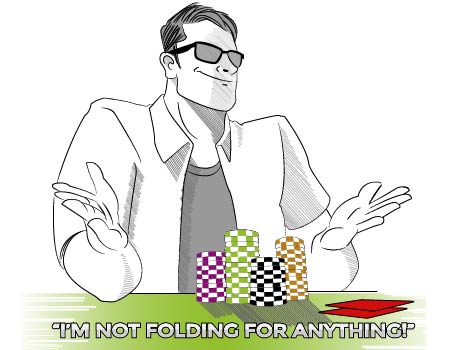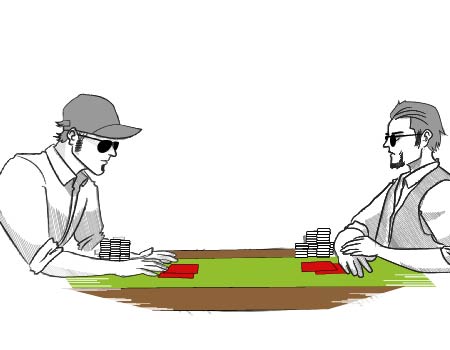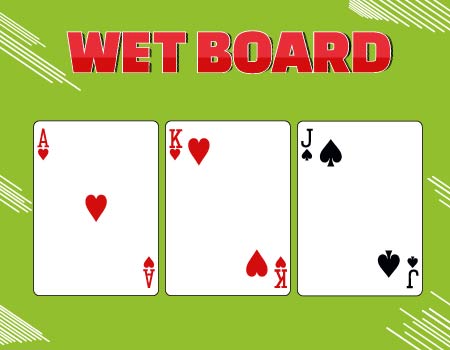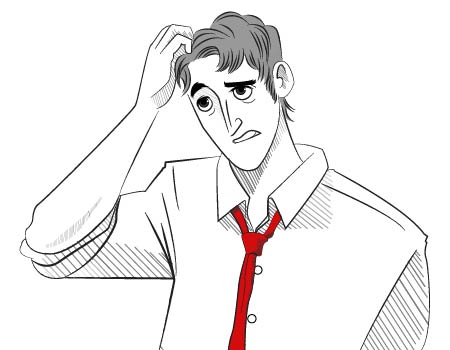POKER BLUFFING STRATEGY
Bluffing is a significant part of the game of poker, as it can have huge implications on your profit margins and bottom line.
One of the biggest strategic factors behind bluffing is choosing exactly the right time and frequency to do it. If you bluff too much, for example, people are going to start calling you more often. If choose the wrong betting line for your bluff and your “story” doesn’t make sense, people might be inclined to call your bluff. If you attempt to bluff against certain types of players, you’re pretty much just lighting your money on fire.

In this section, we’re going to analyse and elaborate upon some major in-game strategic considerations you should always think over before attempting a bluff of any size.
Table of Contents
OPTIMAL BLUFFING STRATEGY
- Choose the Right Opponents: There’s a common phrase in the poker community that states, “Never bluff a fish.” (Fish are considered beginner or less experienced players in poker.) The reason why it’s difficult to bluff against them is because (1) they often love calling and getting to showdown; and (2) they are usually only concerned about the value of their hand and aren’t thinking about what possible hands you could have or may be representing. It’s best to bluff opponents who are capable of making folds (even big folds) in spots where other, more less experienced players might be inclined to call.
- Limit Your Bluffing to Heads-Up Pots: Simply put, the more players there are involved in a hand, the less ideal it is to try and bluff them off the pot. This is because with more players involved in a hand (i.e. after the flop is dealt), the more likely it is someone will have a good enough hand to call you with.

- Bluff with a Strong Hand Range: When you bluff, your aim should be to tell a story that you have a hand range that’s strong and better than that of your opponents. Imagine your early position opponent continuation bets a dry board of T-5-2 rainbow. If you opt to raise here (as a bluff), the only value hands you’re representing are sets, of which there are very few actual hand combinations. If your opponent does indeed have an overpair, it’ll be very difficult for him to fold and subsequently, a bluff of yours is somewhat unlikely to be successful if you raise here.
- Board Textures:As mentioned in the previous point, certain board textures are going to be better for you to bluff at (relative to your table position, of course).
- EXAMPLE: If you’re UTG with pocket 8’s. You raise, your opponent calls in middle position and the flop comes A-K-9. Because you’re in early position, you’re representing a narrow but strong range with many strong Aces (like AK or AQ) or sets (AA, KK, and maybe even 99). A smaller part of your range may consist of 77-88 and TT-QQ, but your betting line is very difficult to deem a bluff if you bet strong over multiple streets with these smaller pair hands). Therefore, even with your measly pair of 8’s, your hand range here for bluffing multiple streets is much stronger than the actual hand you have.

|
Ultimately, always take board textures into account both in terms of wet and dry, and how they should help your perceived hand range versus that of your opponent(s).
|
- NOTE: If you think you can fold out more hands in your opponent’s range by betting slightly larger, then opt for a slightly larger bet size. It ultimately comes down to fold equity vs. losing more money than you have to when you do get called by better.
Your bet sizing also will dictate the percentage of the time you must get your opponent to fold in order to the bluff to be profitable. If you cbet half-pot on the flop (i.e. $10 into a pot of $20), you must just over win 33% to be profitable.
The formula to calculate this is as follows:
|
Breakeven % = $ Risked / ($ Risked + $ Reward) |
- When we cbet ½-pot (as in the example above), we’re risking $10 to win $20 in the pot. $10 / $30 = 33% breakeven win percentage.
To determine if you should bluff then in this situation, plug in the values into the formula above and evaluate whether you think your opponent will fold often enough for your bluff to be profitable
- Think about Possible Turn and/or River Cards: Make it a habit to think of the different turn and/or river cards and combinations that could come after the flop is dealt (or even practise this as an exercise during your study sessions) and analyse how different cards could be good or bad for your or your opponent’s range. It’s going to become much easier to know when to bluff initially and when to bluff multiple streets.

- Does Your Story Make Sense: Ultimately, when you make a bluff, you must ask yourself, “Does my story make sense?” As mentioned, if your bluff only represents a limited number of hand combinations, it’s likely you’ll get looked-up by your opponents. Furthermore, if you take a betting line that confuses your opponents (because there’s no or not many logical hands that make sense for you to have, provided the line you took), it’s likely a competent opponent will call your bluff.
- Your Image: As touched upon in the last chapter, you must have a solid, tight image for your bluffs to have an increased probability of success. If you’ve been tight in your session so far and have only shown down winners, your opponents will be more and more likely to give you credit for having a strong hand, even when you may be bluffing!
